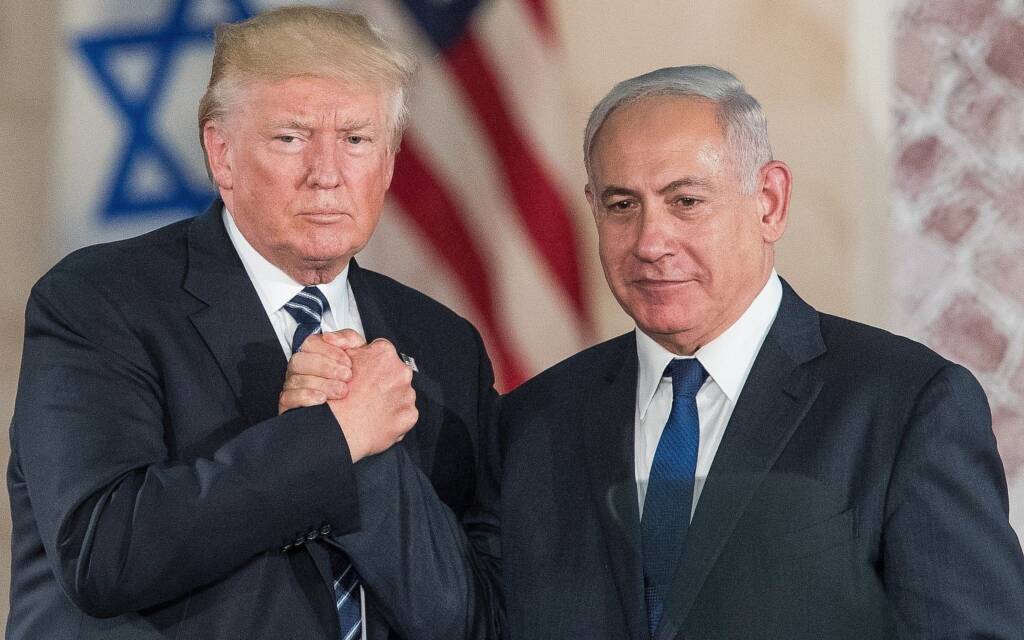In a bold and unexpected proposal, US President Trump has suggested that the US should “take over” the Gaza Strip and lead its reconstruction in the aftermath of the ongoing war with Hamas.
Speaking alongside Israeli Prime Minister Benjamin Netanyahu at the White House, Trump outlined a vision for US involvement that would prioritise removing unexploded bombs, clearing the remnants of war, and promoting economic development.
But Trump said his top agenda will be to remove the Gazans permanently. Almost 2 million residents of Gaza Strip will be resettled, as per Trump’s plan, to nations like Jordan and Egypt.
It will come as a shocking move as Trump sets his plans to implement this radical idea.
On Jan. 25, Trump dialled Jordan King Abdullah II to urge him to accept a large influx of Palestinian refugees. For now, Jordan maintains that “Jordan is for Jordanians, and Palestine is for Palestinians.”
For Jordan, taking in more Palestinian refugees has long been a red line. Trump’s statement may have been an opening tactic in a broader US Middle East peace plan.
Since the 1948 war, which led to the creation of Israel and the mass displacement of Palestinians, Jordan has absorbed multiple waves of refugees. However, each wave has effectively resulted in permanent exile. Palestinians rarely receive the right to return to their ancestral land and instead remain in Jordan indefinitely.
Although Jordan does not officially differentiate between citizens of Jordanian and Palestinian descent in government records, it is estimated that 55 to 70 percent of the population identifies as Palestinian by origin or nationality. The Palestinian population has grown from approximately 750,000 displaced in 1948 to an estimated 5 million to 7 million today.
Trump knows the history very well and thus, will ask Jordan to absorb even more Palestinians for permanent peace in the region and ensuing economic boom under US security umbrella.
Coming to Egypt, the country’s industry sector is already rejoicing over Trump’s radical Gaza plan.
In an interview with the Emirati newspaper Al-Sharq, a top Egyptian construction executive stated that it is “already possible to set up a factory for prefabricated houses on the Egyptian side of Rafah.” This factory, he explained, could provide housing for thousands of Gazans, followed by the construction of cement and material production plants—essentially bringing to life the vision Trump first proposed nearly six years ago.
For Egypt’s business sector—large construction firms, cement and steel manufacturers, glass and wood suppliers, earthworks contractors, and heavy machinery operators—Gaza rebuilding represents a major economic opportunity. Many see it as a potential lifeline that could pull them out of a prolonged period of economic downturn and rising unemployment. They are willing to move in, given there is a reliable financier to cover the costs and ensure payments.
As per UN estimates, direct infrastructure damage in Gaza stands at $18.5 billion, with rubble removal alone projected at $1.2 billion. The total reconstruction cost is expected to reach $40 billion and could take until 2040 or beyond to complete. Where the money will come from? Well, time will tell but yes, absorbing Palestinians would be a cost that these nations will have to pay for ever-lasting peace in the region and the economic boom.
Trump has massive plans for Gaza. He will build lavish hotels there, ports and airports. For so many decades, Gaza has been a constant source of instability and tensions in the region. For the first time, Gaza is going to be a growth engine for the entire region. With this, Trump also plans to scuttle Iran’s tentacles in the region permanently.
